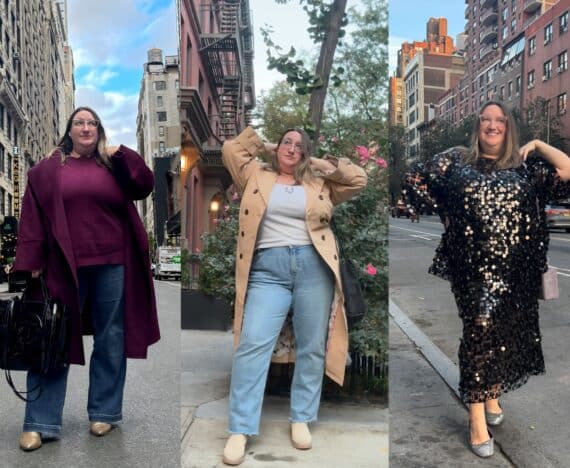Body Positivity 101 and #ImNoAngel

My first impression of the #ImNoAngel campaign was something along the lines of HELL YES. A bold, unapologetic celebration of sexiness that includes visible, unretouched fat? I’m all about it. I’ve since heard some pushback against the hashtag and campaign: Namely, that it isn’t radical enough in its inclusion; and that it is pitting thin and fat women against each other. While I think the former is a valid critique, we should not discount the positive impact of widespread representation.
For women who are well versed in body positivity and know and love the #fatshion tag on Tumblr, the campaign, featuring smaller plus models with mostly hourglass shapes, may not seem revolutionary enough. This is a fair point, and one that should certainly be made, but it does not negate the worth of #ImNoAngel. I’ve noticed some general annoyance with so-called “Body Positivity 101” (i.e. simplistic messages like “Love yourself!” and “All bodies are beautiful!”), but we can’t forget that 101 is meant to be an introductory course. We shouldn’t expect 400 level analysis for people who are just learning the basics. When you are deep into your self-love journey, it can be easy to forget that so many women have yet to take the first step. For women and girls who are killing themselves to try to fit into the narrow standard of mainstream beauty, seeing larger women unabashedly embracing their sexiness on a national stage can truly be groundbreaking.
The amazing reception of #ImNoAngel demonstrates that this is something many women were aching for. And frankly, I’d much rather have the introduction to Body Positivity 101 come in the form of the #ImNoAngel campaign than through the sexist, objectifying lens of “All About That Bass,” where the value of curves was explicitly restricted to those in “all the right places,” like booties for men to hold at night (*gag*). The sexiness in the No Angel campaign is more self focused, with the models stating what they love about themselves.
Of course, no ad campaign will ever have the nuance of a movement orchestrated by well-educated activists in the field, but I am actually quite impressed with how #ImNoAngel was executed. The women starring in the ads and commercials are diverse, and they radiate positivity. They are confident in their sexiness and comfortable in their bodies. They emphasize that sexy is “all about how YOU feel.” Their hotness is not dependent on the male gaze. Their posture is natural – no dramatically arched backs or painful looking contortions in the name of trite seduction. Features that mainstream media consider shameful and unacceptable are on display: There are soft bellies, full thighs, and rolls. I especially appreciate the decision not to retouch Elly Mayday’s scar from her surgery for ovarian cancer. Yes, they are professional models, and not representative of all plus women, but this is a huge step in the right direction. This is a giant national campaign. For many around the country, this might be the first time they’ve seen plus size bodies celebrated on this scale. When you’ve seen one narrow definition as sexy all your life, it can take a bold statement to get you thinking. For scores of women, #ImNoAngel is doing just that.
This need for a strong statement is also why accusations that this campaign is divisive ring false. Lane Bryant is neither saying nor implying that skinny is not sexy. When we make a positive statement about an underrepresented group, we should not have to tack a “too” to the end to protect the feelings of those who have always been held up as the ideal. A celebration of one woman’s beauty is not the denial of another’s. The campaign is not pitting women against each other. It IS coming for the idea, perpetuated at every turn by mainstream media, that the Victoria’s Secret “Angel” standard is the ONLY sexy. This standard doesn’t just exclude plus size women: The vast majority of women who fit into VS sizes do not fit the Angel requirements either. Even the VS Angels struggle to match the photoshopped versions of themselves – before we got a bit more conscious of eating disorders as a society, every year before the Angels runway there would be quotes from the models talking about how they didn’t (or couldn’t) eat for days before the show. For women who have only ever seen this nigh-impossible ideal exalted, seeing plus women unabashedly loving themselves on subways, billboards, and TV screens can indeed be revolutionary.
If you are past this intro-level course in body positivity, and you are so secure in your self love that you don’t care about this game changer of a campaign, I’m happy for you. I mean that with all sincerity. But please, don’t shit on the women who aren’t there yet, or didn’t even know that being there was an option. And if you are not plus size, and you are inclined to cry “skinny-shaming!” because one ad doesn’t include a thin woman, please pick up any fashion magazine and see how long it takes to find a woman wearing plus sizes.



